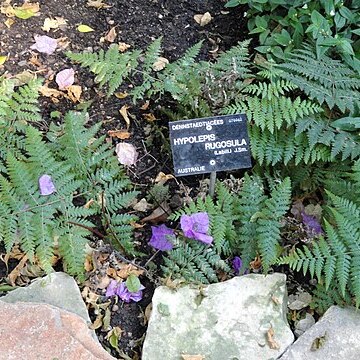Stipe and rachis red-brown or chestnut-brown, becoming yellow-brown near apex, bearing abundant glandular and non-glandular hairs; stipe 10–95 cm long, 2–5 mm diam. Lamina ovate to broadly elliptic, 35–115 cm long, 20–60 cm wide, 3–4-pinnate at base, with abundant colourless and red-brown glandular and non-glandular hairs, 0.3–1 mm long on undersides of veins and midribs. Primary pinnae in 20–30 pairs; longest 13–55 cm long, 5–25 cm wide. Longest secondary pinnae 3–15 cm long, 12–50 mm wide, decreasing markedly in size along primary pinnae; midrib winged. Longest tertiary pinnae 7–40 mm long, 3–15 mm wide, sometimes divided almost to midrib. Veins ending in apices of ultimate pinnules. Sori lacking paraphyses, unprotected or with slightly reflexed green laminal flaps. Spores pale, echinate, 37–40 × 24–27 µm.

